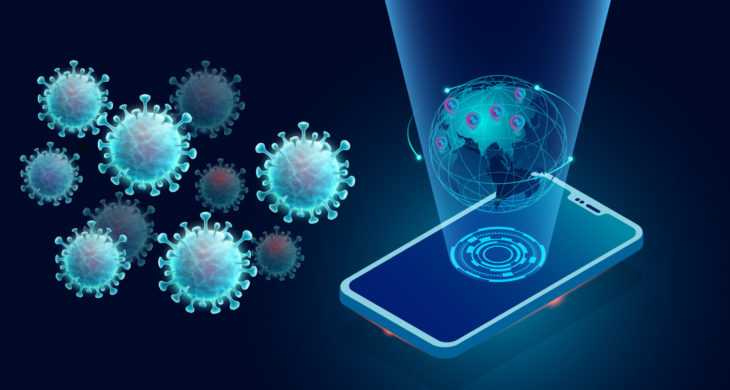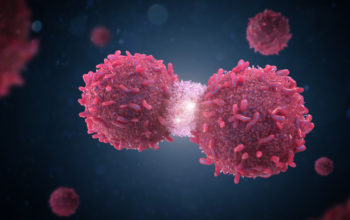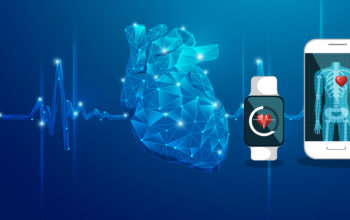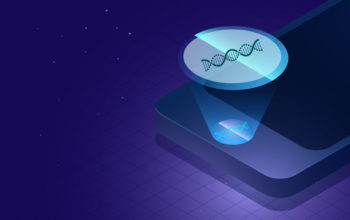
Date: 29th April 2020
AI algorithms are playing crucial roles in numerous areas of controlling and treating COVID-19. From detecting the first signs of the outbreak, to AI-driven epidemiology, treatments, vaccines and even AI-bots, diagnostics and screening. Like the virus itself, AI has infiltrated our everyday life and our global response to fighting this pandemic.
Now, the latest tech to be recruited into the combat is the smartphone – with machine learning-based apps being created for a range of applications.
Diagnosis
It is now clear that the spectrum of symptoms exhibited by those infected with SARS-CoV-2 can be extreme; whilst for some it is sadly fatal, for others they might not even know they have had it. With state coronavirus testing so far being primarily reserved for those in hospital or for key workers the demand for additional methods – including smartphone apps – to diagnose COVID-19 has been increasing.
As such many apps are now available – these range from the simple symptom trackers and chatbots which provide basic advice and information to now, incredibly, those being developed which aim to diagnose COVID-19 from sound.

In pursuit of this, two leading universities, Cambridge University, UK, and Carnegie Mellon University, US, are developing apps that listen to users’ coughs, breath and voices to predict whether they are infected with the coronavirus. Whilst currently they are not smartphone accessible the ultimate goal is to make them so.
Both apps rely on machine learning, and can analyse large volumes of data, however, obtaining substantial datasets will be crucial for these apps to be successful. Furthermore, controlling the quality of the recordings may be difficult and potentially limited by the microphones within smartphones. In addition, regional and global variations in accents is going to make this a challenge.
However, whilst the insurgence of diagnostic apps for COVID-19 has been rapid, there are some general concerns over these types of apps. Miscommunication between the apps and users are common, and users may misperceive the information or ignore it. Also, with limited access to the patient and the relatively simple backend of many of the apps, misdiagnosis rates may be high. Algorithms must also be updated frequently and are only as good as the dataset on which they are based.
Importantly though, for users the apps offer readily accessible, real-time information, placing at least some control back into our own hands and only time will tell how successful and useful they will be in diagnosis.
Tracing apps
One of the most controversial apps are those that trace coronavirus. However, many of these have been, and are being developed, and they are being seen by many, including governments, as being a viable tool to help ease down lock down.
In support of this, a team from Oxford University have been using epidemiological models to help configure a contact tracing app for coronavirus. The results suggest a digital contact tracing app, if carefully implemented alongside other measures, has the potential to substantially reduce the number of new coronavirus cases, hospitalisations and ICU admissions.
Currently many of these apps are now available and whilst each works slightly differently, in the main these apps are employed to let users know when they’ve come into proximity with someone who has later tested positive for COVID-19. They work by allowing a person to input a positive COVID-19 test result into an app, smartphones with similar apps when in close contact then share information – creating a log of where users have been, the app then alerts users if they have come in close contact with a COVID-19-positive user during the virus’ incubation period.
With giants such a Google and Apple joining forces and partnering on a Bluetooth contact tracing app it might seem like the market is wrapped up. However, whilst some countries are favouring this app, some governments such as France and UK (and at least 3 US states), are pushing government-developed contact tracing apps.
Indeed, the German government announced a U-turn on their strategy a few days ago, along with a cautionary message that a coronavirus app central to easing the country’s lockdown is still weeks away from being ready, after it abandoned a home-grown technology in favour of adopting the Google and Apple app. It appears globally which tracking route to employ is a question in itself.
![]()
The main concern here is user data protection and security and where this data is to be kept. Whilst government-based apps employ centralised infrastructure, those such as Google and Apple will use decentralised storage. Here the data is stored on local devices such as phones and is only uploaded with a user’s permission after a confirmed COVID-19 diagnosis. In either scenario how long the data will be kept after the pandemic, and whether the tracing apps will be turned off once they are no longer required remains the uneasy question.
Another dilemma is how these apps adhere to safety and efficacy standards that should be met with any health-care intervention. With no clear global standards existing, and so many apps being independently developed, there is a question over whether these issues are currently being addressed. How positive COVID-19 patients are confirmed also remains a challenge, whilst some use actual test results, others are proposing to just using symptoms.
However, what is certain is that, to be successful, between 40- 60% of the population will need to download and use these apps, and results on uptake has so far been mixed. Singapore’s TraceTogether app now has over 1 million users however, this only represents 1/5 of the populations. Australians seem to be supporting their COVIDsafe app, 2.4 million people have downloaded the app since its release on Sunday night, which exceeded the government’s early hopes. However, this currently only represents 1/10 of the population so there is still a long way to go. Its release also added to security worries, hoax messages have been sent to a number of users to tell them they had breached lockdown restrictions.
How the different apps track their users is also mixed, in the main they are using one of 3 ways: GPS, Bluetooth or QR codes (machine readable codes where people are required to scan or be scanned at public places and the resulting data is then sent to central servers). However, NOVID is the first major anonymous contact tracing app to use ultrasound technology, it claims to more accurately gauge the distance between people and is being pioneered by a team from Carnegie Mellon University, US.
With the plethora of apps available, potentially used by billions of people worldwide, and with no global standards available, the cautionary note perhaps should be that we should not rely too heavily on this tech for easing lockdown and for containing the virus.
Other emerging apps
Tracing and diagnostic COVID-19 apps are currently the most trending. However, there are others being developed to help us in more diverse ways.
With many people eager to avoid spreading COVID-19, and wanting to stick to social distancing guidelines a new app was launched last week helping people to avoid crowds. The free app was designed by Oxford University’s post-doctoral student Alex Barnes and his group in just three days. The Crowdless app allows users to see if their local shops and supermarkets are crowded. The app works globally and it is hoped it will help people all over the world to stay safe, allowing them to choose quiet times to leave the house and to do their essential shopping.
Microsoft has also developed a new chatbot to help people who have recovered from the COVID-19 virus donate plasma. Dubbed Plasmabot, it screens candidates and determines if they can donate to help with clinical research and treatments; it then directs them to where donations can be made.
It appears in the app world that variety really is the spice of life!
Conclusions:
The far-reaching extent of COVID-19 and the devastating effect it is having on the world is changing how we use our tech. As countries search for ways to exit lockdown and to avoid or manage a second wave of coronavirus cases, how we achieve this is far from clear.
With approved vaccinations and treatment still a long way off, and the uncertainty surrounding immunity post-covid infection, strategies solely-based around medical interventions may need additional help in the short-term.
However, with the many issues surrounding the use of apps discussed here, they too are not likely to be used in isolation. Hopefully by combing technological and medical advances this will allow us to specify strategies both short and long-term, harnessing the unique power of each to allow the best outcomes possible.


